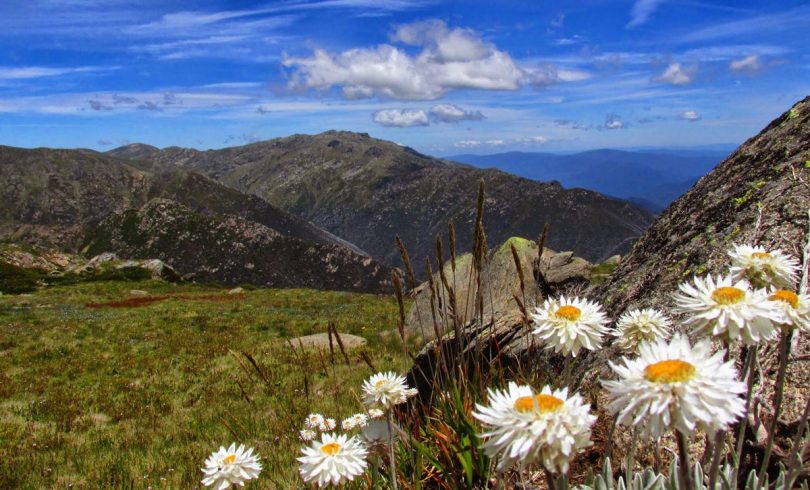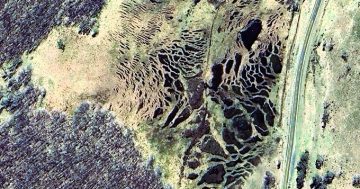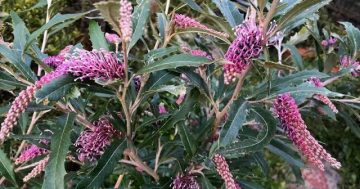
Snow daisies in Kosciuszko National Park that are facing an increase in temperatures due to climate change. Photo: Mike Bremers.
Native alpine plants in Kosciuszko National Park are not keeping pace with rapid changes in the environment, according to a study by a PhD research scholar at the Australian National University.
The study, funded by a grant from the Australian Research Council’s Discovery Projects, honed in on herbarium (preserved) specimens from 21 native alpine plant species, making more than 1500 measurements of plant size, leaf thickness, mass and shape from the past 126 years.
Only two of the 21 species showed significant changes in any of the measured traits.
Lead author Meena Sritharan said her study, published in Ecology and Evolution, found that 20 species were not responding to warming conditions.
“We predicted leaves would become thicker as this would be advantageous if plants were facing longer growing seasons and increasing temperatures,” she said.
“Our findings suggest native alpine plants may not be adapting to the substantial local climate change occurring in Australian alpine regions.”
Another study, published in 2009 in Australian Journal of Botany, identified an increase in mean annual temperature of 0.74 degrees Celsius between 1950 and 2007 in Australia’s subalpine and alpine zones.
“Australian native alpine plants face a bleak future in the face of rapid climate change,” said Ms Sritharan.

PhD scholar Meena Sritharan led the research project into Australia’s native alpine plants . Photo: Supplied.
Only one species, star plantain (Plantago muelleri), showed it was adapting to warmer conditions by displaying an increase in plant size.
A second plant, cascade everlasting (Ozothamnus secundiflorus), showed evidence of a change in plant traits, but it decreased in leaf thickness during the 125-year time period.
The study also ruled out changes expected by chance alone, based on an earlier study using the same methods that found significant changes in 70 per cent of species introduced to southeast Australia.
“Australia’s native alpine plants do not appear to be adapting to changed conditions, and because of the low elevation of Australia’s mountains, they do not have much scope for uphill migration,” said Ms Sritharan.
“Thus our findings suggest Australia’s native alpine plants are at even greater risk in the face of future climate change than was previously understood.”
The point of the study was to gauge whether alpine plants in the southern hemisphere had changed in morphology, or their physical form, over time in response to climate warming.
Ms Sritharan said the 21 alpine plants exist in one of the ecosystems known to be least resistant to the effects of climate change.
Other plant species studied include the cushion caraway (Oreomyrrhis pulvinifica), alpine rice flower (Pimelea alpine), carpet heath (Pentrachondra pumila) and snow aciphyll (Aciphylla glacialis).
“Alpine environments are facing higher than average increases in temperature in the last century,” said Ms Sritharan.
“But rapid changes in the environment can promote rapid changes in species.
“Consequently, we expected that a rapid increase in temperature would result in a change in the plant traits we measured, such as size and leaf shape.
“These changes in plant traits would suggest that alpine plants may be changing in response to a changing climate.”
Ms Sritharan said the study findings are surprising because the results are contrary to what they expected and what species in the northern hemisphere are facing.
She said plants in the northern hemisphere are changing substantially and adapting to changed environmental conditions.
Next summer, researchers from the University of NSW’s Evolution & Ecology Research Centre will conduct heatwave experiments to measure how Australian alpine plants respond to an increased duration of heatwaves, which is what climate researchers forecast for the future.
Original Article published by Michael Weaver on The RiotACT.
















